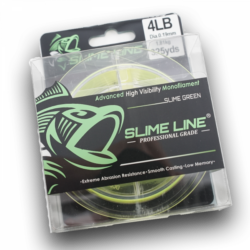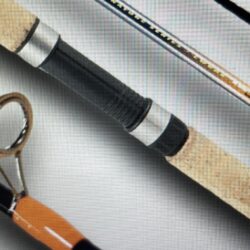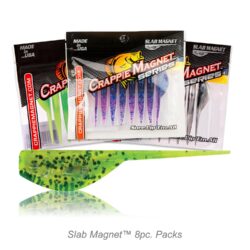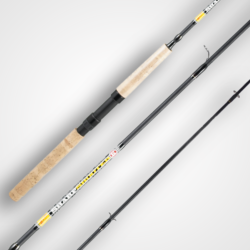Your cart is currently empty!

There are so many ways to fish for crappie, and it seems that each of us has our own favorite. Being the host of the Brushpile Fishing Show, I have had the pleasure of seeing so many of these techniques applied by the best anglers. The common thing that they all have is that they have their patterns down to a science!
Although I enjoy each way that we catch crappie, dock shooting is my favorite technique. I have been doing it for many years now, and still remember the first time I tried it. It was on a trip to Weiss Lake in Alabama. I was catching a few fish on that particular trip, but then I ran into a couple of guys down there and each one shared some tips on this thing they called dock shooting. Sam Heaton was one of them, and the other was Jack Jones, who at the time owned the Bay Springs Marina. These two guys got me started on a habit that I am still loving today!
Many know about dock shooting but have never tried it, and there are a few that still have no idea about this pattern. So……., let’s take a look, one step at a time.
Getting Started: Equipment
It doesn’t take a lot to get going with shooting, but you do want to get equipment that was designed for this technique, as well as things that will work and give you every advantage. First, let’s look at the rod. I use the Sharp Shooter Six, by B’n’M. This rod was specifically designed for shooting, and especially for the bend that you put on the rod when shooting. They also have a 5 1/2ft. rod for this. Darrell Baker, from Weiss Lake Crappie Guides, is one of the best shooters in the industry and prefers the shorter rod, while I like the 6ft version. There is also a time that I will use my 8ft. Signature Series rod to “flip” docks, but we will get to that later!
As far as line, Hi-Vis is a must, as you are line watching for the strikes. I use the Slime Line 4lb. I used to use 6lb, however, have changed my thinking on that in the past few years. I can’t tell you the reason, but you see the lighter strikes so much more with the 4lb, as opposed to the 6lb.
There are several types of jigs I will, but I like a small jig head, normally a 1/48 or 1/32, and sometimes a 1/24. Small jig heads allow the bait to fall slowly. As far as plastics, there are several that are dynamite! From Bonehead Tackle, I like the Brush Glider, the Stump Bug, and the Slim Stick. The Slim Stick is especially good when the bite is finicky. I also like the Crappie Magnet, Slab Magnet, and the Slab Curly. I love the Slab Curly when the fish are in attack mode and will go after a fast-moving bait.
And for those shallow suspended fish, every angler should have an ice float! This is a big plus, not only for those suspended crappie, but also is a game-changer when the fish seemed to have lockjaw! They come in several sizes, but you want to use one that is just barely big enough to hold whatever size jig head you are using. These floats, commonly called teardrop floats, are oval-shaped and can be pegged with a toothpick, or used as a slip float.

The Technique
So you say, “What exactly is dock shooting?” It is almost like using a bow or slingshot to get under docks or pontoons. You want to get back to the darkest water, or spots that most anglers won’t attempt to reach. There are several ways to fine-tune the art of doing this, and practice will tell which is most comfortable for you.
Let’s Get Started
To start, open the bail and let the line just rest on your first finger. Do not put pressure on the line with this finger. The line will stay in place with the pressure you put on it by pulling the jig into the “launch” position. Next, pull the jig back, making a bow with the rod. I prefer pulling it back almost to my reel. Again, this varies from angler to angler. Darrell does not pull the jig back as far. Try different pull back positions and use the one that works best for you.

You are almost ready to fire away!! Now aim the rod to where you want to shoot. When you are holding the jig, do it by the jig head, not the hook. When you have your target locked in, fire away! When you release the jig, it will pull the line off of your “resting” finger. This takes a little practice, but it won’t take long until you get it down. One thing that I suggest to folks is don’t overthink or aim too long. Load up, aim, and shoot!!
It is also a good idea to practice before going out on the water for the first time. You can do this in a number of ways. One is to take a regular chair and shoot under it. Once you start being consistent, start trying to hit a particular leg of the chair. Start to pinpoint exactly where you want the jig to go. When you transfer this practice onto the water, you will able to get into those hard to reach places. You can also practice by turning a 5-gallon bucket on its side and shooting into it, or shooting under a small opening under a garage door.

Line Watching, Types of Strikes:
A lot of crappie fishermen like to feel that thump and that is what they look for when setting the hook. If that is you, then you will love the Sharp Shooter Six that we mentioned earlier. It has a section of the cork handle carved out so that you can put your finger directly on the blank. HOWEVER…….., most of the strikes I get, I will actually see on the line before I feel them. That is why concentration is a must. There are a few different types of line movement you will see during the “hit”.
The first is the line will “jump”. What I mean is the line will look like it got hit by electricity! To increase your chance of seeing this, leave a “bow” with your line as it starts to fall.
You may also see the line move to the left or right when the jig is falling. Set the hook!!
The third thing you may see with the line is that it goes slack., Again, if you see this, the fish is there for your taking. And remember, use the Hi-Vis line for this. You will be amazed by how much easier it is to see than a clear line. So, GO SLIME GREEN SLIME LINE!!
The Bite
There are a few ways that the bite tells me which style of plastic I prefer to use. I guess I break these down into aggressive and finicky bites. Here is what I mean.
ON THE FALL: As soon as you shoot and the jig starts to fall, the crappie hits it. To me, this is an aggressive bite. That is when I will go to plastics. Two of my favorites for this bite are the Brush Glider and the Slab Magnet.
ON THE RETRIEVE: So, you have shot the jig and did not get hit as it fell, but as you start reeling it in, the crappie smacks it. Again, to me, when the fish are chasing and hitting, it means they are aggressive and active. Big baits are my go-to again, but more important is the jig action. I really like the Slab Curly and Stump Bugs for this bite.
FINICKY BITE: So let’s say a spring cold front has come through, and the crappie won’t hit as the jig falls or as you retrieve. You know they are there, but they are inactive. Here is where the ice floats come in. ESPECIALLY in the spring. The fish are normally suspended under the docks and are in shallow water. You can still get a nice stringer during these tough conditions, but you really must slow down your presentation. But how do we do this when we are shooting the jig 20 ft away from where we are? When you shoot with the float, you can slow down the jig, and even keep it in one place. Sort of like vertical jigging, but from 20 ft. away! When the fish are finicky you want to keep things somewhat still. I have been able to see what happens in fish tanks with this.
First of all, my go-to bait will be the Slim Stick. I like the narrow body, but more important is the long thin tail. When you work this under the cork, it will produce. A key is to not “overwork” the jig. After you shoot it and it falls to its depth, it will get the crappie’s attention. Let it set for several seconds. If you do not get a strike, just BARELY pop the jig. As it rises and falls, the crappie will not necessarily hit right away, but as it sets still, the long tail will still just barely quiver on its own, and the fish will hit it. Here is what is important now. Even with the light ice cork, it will not go under many times. It may just slightly turn up on its side. If you can see that light strike, you will get those hard to get cold front crappie. Another HUGE advantage the float will give you is that once you locate the depth the crappie are suspending at, your jig will ALWAYS be in the strike zone.

Strategy:
Here are a few pointers that could help you. When fishing a dock, especially on a cloudy day, I will fish the outside areas first. On overcast days, crappie can be found on the outside, and many dock owners will have brushpiles in those areas. Also, try shooting the docks from all angles. There have been several times I have hit the same areas under a dock, but only got strikes from one particular angle. This could be due to light conditions, or current. Also, most of the time, but not always, the darker the water under the dock, the better!
“Flipping” Option
Another option that I enjoy is flipping docks. I normally do this if there is a good amount of space between the bottom of the dock platform and the surface of the water. This makes it easy to flip under the docks while standing up. Makes it a little easier on my back after a full day of fishing!! One of the things I designed my Signature Series rods, both the 8 and 10 ½ ft for was this exact thing. Again, it will take a little practice, but you flip the jig under the docks with the longer rods. With practice, you will still be able to pinpoint the areas you want to hit.
Products mentioned in this Article:
Comments
One response to “Dissecting Dock Shooting!!”
-
Good info thank you. Watched your show a lot when it was on direct tv. I am going to go to work on dock shooting.






Leave a Reply